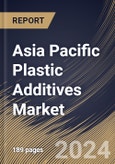Consumer goods, from electronic devices to household appliances, often incorporate plastic additives to achieve desired properties. Flame retardants and heat stabilizers are essential for electronics, ensuring safety and longevity. Colorants and impact modifiers enhance the aesthetic appeal and durability of consumer goods. The healthcare sector increasingly relies on plastics to produce medical devices, packaging, and implants. Plastic additives in this context focus on achieving biocompatibility, antimicrobial properties, and regulatory compliance. The versatility of plastic additives allows for the customization of materials to meet the specific requirements of the healthcare industry.
In addition, the electronics industry relies on plastic additives to enhance the performance and safety of components. Flame retardants are crucial for preventing the ignition and spread of fires in electronic devices, while other additives contribute to insulation, heat resistance, and mechanical strength. In agriculture, it plays a role in producing films and mulches for crop protection and cultivation. UV stabilizers protect these materials from the degrading effects of sunlight, while plasticizers and colorants contribute to the flexibility and functionality of agricultural films.
China's electronic manufacturing sector has expanded favorably due to the government's backing and industrial policies encouraging technological innovation and progress. This directly impacts the demand for plastic additives that meet the specific requirements of electronic applications. As per the data from the Shanghai Municipal People's Government, the total retail sales of China's consumer electronics sector are expected to rise 4 percent to 2.2 trillion yuan (US$305 billion) this year, while the growth pace will further increase to 5 percent in 2024. Hence, with the expansion of the packaging and electronics sectors in Asia Pacific, the region will have increased demand for plastic additives.
The China market dominated the Asia Pacific Plastic Additives Market by Country in 2022 and would continue to be a dominant market till 2030; thereby, achieving a market value of $11,637.9 million by 2030. The Japan market is registering a CAGR of 4.6% during (2023 - 2030). Additionally, The India market would showcase a CAGR of 6% during (2023 - 2030).
Based on Plastic Type, the market is segmented into High-Performance Plastics, Commodity Plastic, and Engineering Plastic. Based on Application, the market is segmented into Building & Construction, Packaging, Automotive, Consumer Goods, Agriculture, Electrical & Electronics, and Others. Based on Type, the market is segmented into Plasticizers, Flame Retardants, Impact Modifiers, Antioxidants, Lubricants, Antimicrobials, UV Stabilizers, and Others. Based on countries, the market is segmented into China, Japan, India, South Korea, Singapore, Malaysia, and Rest of Asia Pacific.
List of Key Companies Profiled
- BASF SE
- Exxon Mobil Corporation
- Clariant AG
- Kaneka Corporation
- Lanxess AG
- The Dow Chemical Company
- Evonik Industries AG (RAG-Stiftung)
- Songwon Industrial Co., Ltd.
- Nouryon (Carlyle and GIC.)
- Albemarle Corporation
Market Report Segmentation
By Plastic Type (Volume, Kilo Tonnes, USD Billion, 2019-2023)- High-Performance Plastics
- Commodity Plastic
- Engineering Plastic
- Building & Construction
- Packaging
- Automotive
- Consumer Goods
- Agriculture
- Electrical & Electronics
- Others
- Plasticizers
- Flame Retardants
- Impact Modifiers
- Antioxidants
- Lubricants
- Antimicrobials
- UV Stabilizers
- Others
- China
- Japan
- India
- South Korea
- Singapore
- Malaysia
- Rest of Asia Pacific
Table of Contents
Companies Mentioned
- BASF SE
- Exxon Mobil Corporation
- Clariant AG
- Kaneka Corporation
- Lanxess AG
- The Dow Chemical Company
- Evonik Industries AG (RAG-Stiftung)
- Songwon Industrial Co., Ltd.
- Nouryon (Carlyle and GIC.)
- Albemarle Corporation
Methodology

LOADING...








